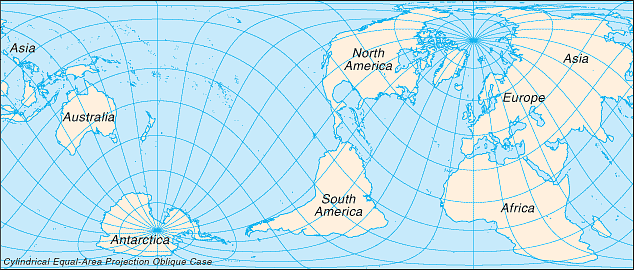- Word
area-preserving map
- Image

- Description
The phenomena of "area-preserving" occurs within the abstract framework of the state space of a system. It dictates that for some dynamical systems with a relatively smooth state space (in topographical terms), when the system is allowed to run for a very long time, the average state of the system over that amount of time is approximately equivalent to the average state of that system over its state space. A physical example of this might be an atom of a gas in an enclosed chamber of finite volume. In the absence of friction, gravity, or any other force that might introduce asymmetry, one could let the atom bounce from surface to surface within the chamber. If this were allowed to continue for a sufficiently long amount of time, and one averaged the location of the atom over this entire time, the average location over this time would very nearly resemble the average location over the volume of the chamber (i.e. near the center of the chamber).
In the context of cartography, area preserving describes any method whereby a representation of a three-dimensional object (i.e. the Earth) is projected on a two-dimensional surface using techniques that preserve the relative sizes of different regions on the surface.
- Topics
- Statistical Physics, Dynamical Systems
- Difficulty
- 1
